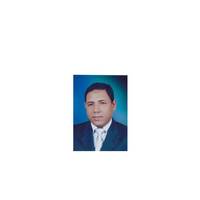Papers by Metwally Abu - Hamd
Journal of Constructional Steel Research

Sustainability
This paper develops a life cycle assessment framework for embodied environmental impacts of build... more This paper develops a life cycle assessment framework for embodied environmental impacts of building construction systems. The framework is intended to be used early in the design stage to assist decision making in identifying sources of higher embodied impacts and in selecting sustainable design alternatives. The framework covers commonly used building construction systems such as reinforced concrete construction (RCC), hot-rolled steel construction (HRS), and light steel construction (LSC). The system boundary is defined for the framework from cradle-to-grave plus recycling and reuse possibilities. Building Information Modeling (BIM) and life cycle assessment are integrated in the developed framework to evaluate life cycle embodied energy and embodied greenhouse emissions of design options. The life cycle inventory data used to develop the framework were extracted from BIM models for the building material quantities, verified Environmental Product Declarations (EPD) for the materi...
Journal of Cleaner Production
Advances in Structural Engineering

Fire Science Reviews, 2014
Performance-based fire design for cold-formed steel systems is in its infancy. This paper brings ... more Performance-based fire design for cold-formed steel systems is in its infancy. This paper brings together existing research on cold-formed steel materials, members, and assemblages at elevated temperatures; and complementary analysis and design methods necessary for the development of analysis-based design for cold-formed steel systems under fire. Cold-formed steel systems have become popular in building construction as both load-bearing and non-load-bearing elements, primarily due to their high strength-to-weight ratio and ease of construction. Consequently, design specifications, and structural analysis tools have rapidly evolved to facilitate engineering design of these complex thin-walled members. However, in fires the performance of cold-formed steel systems are assured by prescriptive detailing and standardized testing. Today, engineering knowledge is rapidly advancing, providing the opportunity to contemplate analysis-based design as an enabling tool for general performance-based fire engineering of cold-formed steel systems. The review provided here includes experimental results on mechanical and thermal properties of cold-formed steel and temperature dependent constitutive relations, subsystem testing and computational simulations, and analysis models and exploratory methods for fire design, i.e., the building blocks towards performance-based fire design for cold-formed steel systems.

HBRC Journal, 2014
ABSTRACT This paper represents the finite element results for the local buckling of tapered plate... more ABSTRACT This paper represents the finite element results for the local buckling of tapered plate girders subjected to combine pure bending and shear stresses. An idealized model is developed representing the loading of the tapered panel that generates uniform normal stresses due to flexure, or uniform and constant shear stresses in the case of shear. Eigen-value analysis was performed for several tapered web plate girders that have different geometric parameters. A parametric study is made to reduce the FE model size showing the effect of decreasing the tapered panel adjacent straight panels, maintaining the same result accuracy as a complete girder model. The combined buckling capacity of bending and shear is determined by applying all possible load pattern combinations, together with different interaction ratios. An analysis study is presented to investigate the effect of the tapering angle on the combined bending–shear capacity of the girder. The study also includes the effect of the flange and web slenderness on the local buckling of the girder. Considering residual stresses as part of the loading stresses, the analysis procedure is repeated for some cases, and the effect of combining of the residual stresses together with the external loads is found. Empirical approximate formulae are given to estimate the combined flexure–shear buckling resistance of the tapered girder safely.
Structure and Infrastructure Engineering, 2007
... 19949. Farrar, CR, Baker, WE, Bell, TM, Cone, KM, Darling, TW, Duffey, TA, Eklund, A. and Mig... more ... 19949. Farrar, CR, Baker, WE, Bell, TM, Cone, KM, Darling, TW, Duffey, TA, Eklund, A. and Migliori, A. 1994. “Dynamic characterization and damage detection in the I-40 Bridge over the Rio Grande”. ... View all references, Abu-Hamd 20033. Abu-Hamd, MH 2003. ...

Sustainability
The objective of this paper is to apply the life cycle assessment methodology to assess the envir... more The objective of this paper is to apply the life cycle assessment methodology to assess the environmental impacts of light steel framed buildings fabricated from cold formed steel (CFS) sections. The assessment covers all phases over the life span of the building from material production, construction, use, and the end of building life, in addition to loads and benefits from reuse/recycling after building disposal. The life cycle inventory and environmental impact indicators are estimated using the Athena Impact Estimator for Buildings. The input data related to the building materials used are extracted from a building information model of the building while the operating energy in the use phase is calculated using an energy simulation software. The Athena Impact Estimator calculates the following mid-point environmental measures: global warming potential (GWP), acidification potential, human health potential, ozone depletion potential, smog potential, eutrophication potential, prim...
Ain Shams Engineering Journal
Advances in Civil Engineering
The aim of this paper was to present a verified finite element method that represents the full-sc... more The aim of this paper was to present a verified finite element method that represents the full-scale-braced shear walls under seismic loads and to study their ductility. The models account for different types of material and geometric nonlinearities. The screws that connect the cold-formed-steel (CFS) studs, tracks, gusset plates, and braces are considered explicitly in the model. The deformation of the hold-downs under the horizontal load is considered. The finite element program ANSYS (2012) is used to model and analyze the case studies. A parametric study is performed to investigate the response modification factor (R) of the CFS-braced shear walls. The parametric study showed that the North American Specification is about 20% conservative in estimating the (R) factor.










Uploads
Papers by Metwally Abu - Hamd